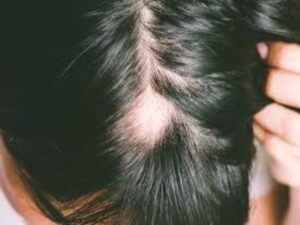
Alopecia refers to hair loss or baldness in humans. It has several types including areata, totalis and universalis. Alopecia areata causes patchy hair loss, while alopecia totalis and alopecia universalis causes excessive hair fall leading to complete baldness. The treatment of alopecia involves medications and hair transplant therapy. Commonly used medications include minoxidil solution, corticosteroids and JAK inhibitors. As the prevalence of alopecia is rising globally due to various environmental and genetic factors, the demand for its treatment is increasing rapidly.
The global alopecia treatment market is estimated to be valued at US$ 10.2 Bn in 2024 and is expected to exhibit a CAGR of 6.1% over the forecast period 2024 to 2031, as highlighted in a new report published by Coherent Market Insights.
Market Dynamics:
Growing prevalence of alopecia and growing opportunities for hair transplantation are the major factors driving the growth of the alopecia treatment market. Alopecia affects nearly 147 million people worldwide with 8 million new cases reported every year. The prevalence of alopecia areata is estimated to be around 2% of the world population. Genetic predisposition and increasing environmental pollution makes individuals more prone to developing alopecia. This growing prevalence of alopecia increases the demand for its drug therapy as well as hair transplant procedures. In addition, advancement in hair transplant techniques such as follicular unit extraction and use of robotics allows treating cosmetic baldness more efficiently. This has led to increased acceptance of hair transplantation over the years, thereby creating opportunities for market growth. Rising awareness about treatment options available for alopecia and increasing disposable income in emerging countries are also expected to aid the alopecia treatment market expansion during the forecast period.
Segment Analysis
The alopecia treatment market is dominated by the alopecia areata segment which accounts for around 40% of the overall market share. Alopecia areata causes unpredictable hair loss and affects around 2% of the global population at some point in their life. Among the different types of alopecia, alopecia areata has no known cause and treatment can be challenging making it an area of high focus for new treatment development.
PEST Analysis
Political: Regulations around new drug approvals influence the entry of new treatment options. Stringent approval process may delay market availability of new drugs.
Economic: Rising disposable incomes in developing nations is increasing healthcare spends and boosting market growth. However, high treatment costs can be a restraint in some regions.
Social: Alopecia impacts quality of life and self-confidence. Growing social acceptance of hair loss issues is reducing stigma and encouraging patients to seek treatment.
Technological: Advancements in stem cell therapies, laser treatments and topical formulations are expanding treatment options beyond traditional methods like drugs, supplements and medical devices. Novel mechanisms of action hold promise.
Key Takeaways
The global alopecia treatment market size was valued at USD 10.2 Bn in 2024 and is expected to witness high growth over the forecast period of 2024 to 2031 at a CAGR of 6.1%.
Regional analysis
North America currently dominates the alopecia treatment market with the highest revenue share of over 35% in 2024 owing to high healthcare spending and ready adoption of new treatment technologies. Asia Pacific is expected to witness the fastest growth over the forecast period supported by India and China with their vast population scales and growing medical tourism industries.
Key players
Key players operating in the alopecia treatment market include Stemson Therapeutics, Litmus Pharmaceuticals Inc., Histogen Inc., Cipla, Dr. Reddy’s Laboratories, RepliCel Life Sciences and Capillus. Stemson Therapeutics is a leading player developing stem cell based treatments while Dr. Reddy’s and Cipla have a strong presence in generic and branded drugs markets.
*Note:
- Source: Coherent Market Insights, Public sources, Desk research
2. We have leveraged AI tools to mine information and compile it


